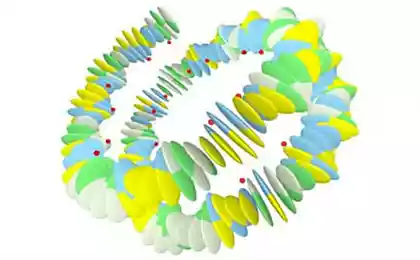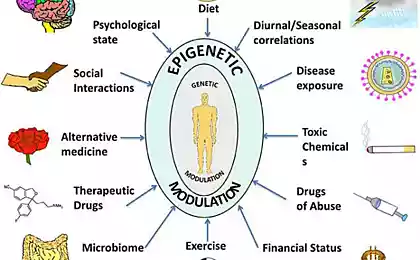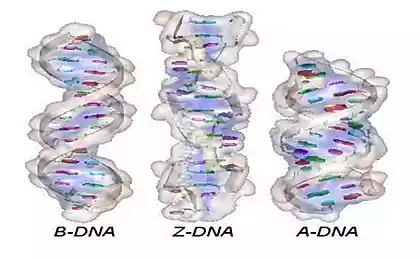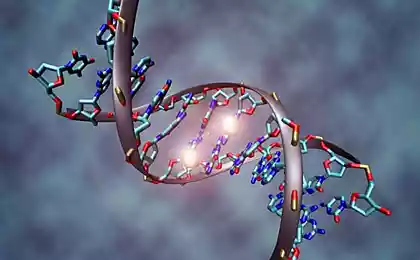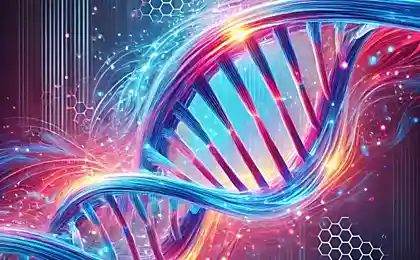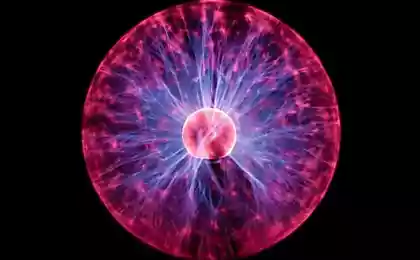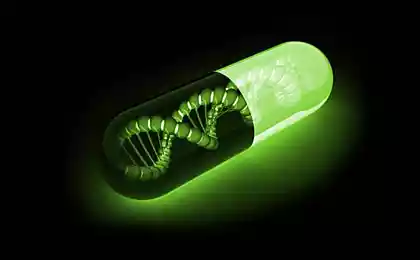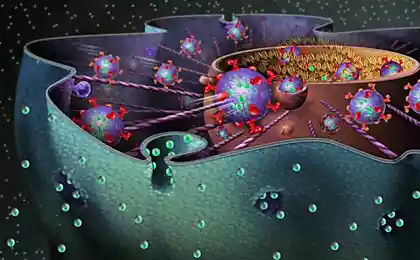484
Regulatory proteins operate on the principle of Tom Sawyer
To change the activity of gene regulatory proteins is not necessarily always get there, we need only briefly "sit down" on the DNA.
The realization of genetic information begins with the fact that the DNA molecule is synthesized messenger RNA. Then the RNA goes to the ribosomes, which are in accordance with the genetic code, transcribed into RNA, will begin to synthesize protein. It is clear that the cell exists in a constantly changing environment, and it changes over time, so it may need some proteins, then the other. To provide the required quantity of a protein, in the cell there are many regulatory mechanisms, the lion's share of whom work at the stage of transcription, that is, during the RNA synthesis. And the main "actors" there are proteins called transcription factors.
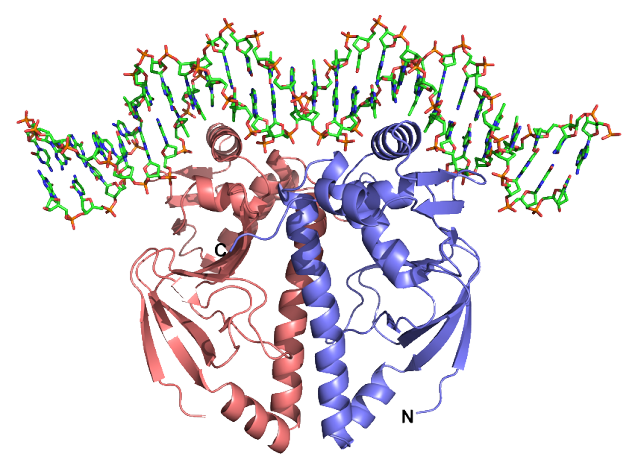
By itself, the transcription is an enzymatic complex, which is building a chain of RNA on the DNA chain according to the rule of complementarity of the nucleotides. But in order for transcription started, she needs to "go-ahead" of the regulatory region in the DNA. This scope is valid again, not in itself, but via the transcription factor that binds to regulatory DNA-sequences and thereby determines the activity of transcription. Moreover, the protein-a regulator does not necessarily stimulate the process, he might suppress RNA synthesis.
Transcription factors there is a huge number, some have a narrow specialization relative to the sequences in the DNA, while others work with a wide range of genes, some are alone, some work in teams with other proteins. The main event here – the interaction of the protein with DNA. But does it need to a transcription factor times contact the regulatory region in DNA, continued to be on it and continued to send a signal the enzyme RNA-synthesizing complex? At first glance it seems that this is what should happen, and that if the factor will leave DNA, and its regulatory influence will disappear.
However, as found by researchers from new York University, it is not so. Coruzzi Gloria (Gloria M. Coruzzi) and her colleagues analyzed the activity of plant genes involved in the assimilation of nitrogen fertilizer. When trying to figure out how they interact with transcription factors, it was found that most of them remain associated with DNA for a short time, of the order of several minutes. But, as stated in the article вProceedings of the National Academy of Sciences, a regulatory effect from them then did not disappear, although the regulatory protein to DNA was not.
The authors compare this with a famous passage in the book about Tom Sawyer, which describes how Tom whitewash the fence of his aunt. Not wanting to work for himself, he urged his friends and comrades that he had only an honorary obligation, and which he would prefer no one to share. But in the end he had relented and some offering handed a brush and a bucket of lime to another, and he went to cool off in the shade. The analogy with transcription factors is obvious, however, proteins after the act the regulation does not indulge in idleness and aspire to a different gene, then to third, etc. in Other words, due to this inertial property regulation, a small number of transcription factors in a short time can activate several genes.
In fact, such a model of regulation of transcription is quite old – it was first offered in the 80-ies of XX century, and then a little rusty. Until now, the interaction of transcription factors with DNA studied by methods which allow to detect only a long-standing relationship continued for, for example, half an hour. Therefore, short-lived events, lasting from 1-5 minutes, dropped out of sight of researchers. Now managed to find a way to register the super short interaction that may last fractions of a second. Of course, these data not only extend our understanding of the management of major cellular processes, but also can push forward in biotechnology. For example, the same plants can be "persuaded" to absorb more fertilizer acted on that such a short DNA-protein interactions.
Source: nkj.ru
The realization of genetic information begins with the fact that the DNA molecule is synthesized messenger RNA. Then the RNA goes to the ribosomes, which are in accordance with the genetic code, transcribed into RNA, will begin to synthesize protein. It is clear that the cell exists in a constantly changing environment, and it changes over time, so it may need some proteins, then the other. To provide the required quantity of a protein, in the cell there are many regulatory mechanisms, the lion's share of whom work at the stage of transcription, that is, during the RNA synthesis. And the main "actors" there are proteins called transcription factors.

By itself, the transcription is an enzymatic complex, which is building a chain of RNA on the DNA chain according to the rule of complementarity of the nucleotides. But in order for transcription started, she needs to "go-ahead" of the regulatory region in the DNA. This scope is valid again, not in itself, but via the transcription factor that binds to regulatory DNA-sequences and thereby determines the activity of transcription. Moreover, the protein-a regulator does not necessarily stimulate the process, he might suppress RNA synthesis.
Transcription factors there is a huge number, some have a narrow specialization relative to the sequences in the DNA, while others work with a wide range of genes, some are alone, some work in teams with other proteins. The main event here – the interaction of the protein with DNA. But does it need to a transcription factor times contact the regulatory region in DNA, continued to be on it and continued to send a signal the enzyme RNA-synthesizing complex? At first glance it seems that this is what should happen, and that if the factor will leave DNA, and its regulatory influence will disappear.
However, as found by researchers from new York University, it is not so. Coruzzi Gloria (Gloria M. Coruzzi) and her colleagues analyzed the activity of plant genes involved in the assimilation of nitrogen fertilizer. When trying to figure out how they interact with transcription factors, it was found that most of them remain associated with DNA for a short time, of the order of several minutes. But, as stated in the article вProceedings of the National Academy of Sciences, a regulatory effect from them then did not disappear, although the regulatory protein to DNA was not.
The authors compare this with a famous passage in the book about Tom Sawyer, which describes how Tom whitewash the fence of his aunt. Not wanting to work for himself, he urged his friends and comrades that he had only an honorary obligation, and which he would prefer no one to share. But in the end he had relented and some offering handed a brush and a bucket of lime to another, and he went to cool off in the shade. The analogy with transcription factors is obvious, however, proteins after the act the regulation does not indulge in idleness and aspire to a different gene, then to third, etc. in Other words, due to this inertial property regulation, a small number of transcription factors in a short time can activate several genes.
In fact, such a model of regulation of transcription is quite old – it was first offered in the 80-ies of XX century, and then a little rusty. Until now, the interaction of transcription factors with DNA studied by methods which allow to detect only a long-standing relationship continued for, for example, half an hour. Therefore, short-lived events, lasting from 1-5 minutes, dropped out of sight of researchers. Now managed to find a way to register the super short interaction that may last fractions of a second. Of course, these data not only extend our understanding of the management of major cellular processes, but also can push forward in biotechnology. For example, the same plants can be "persuaded" to absorb more fertilizer acted on that such a short DNA-protein interactions.
Source: nkj.ru




